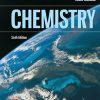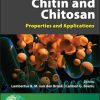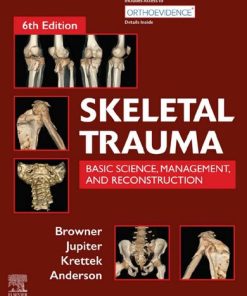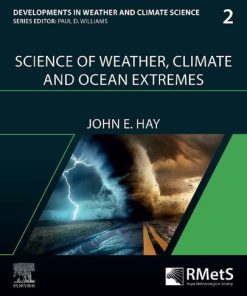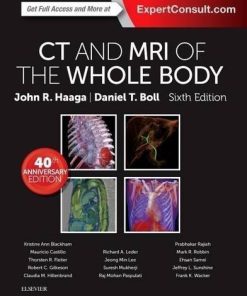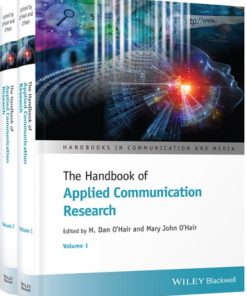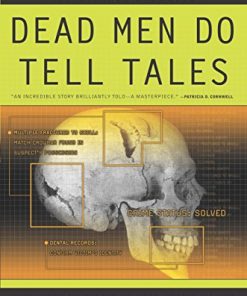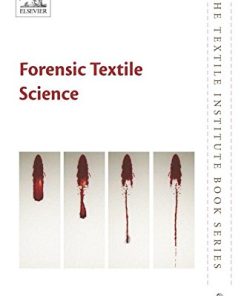(EBook PDF) Forensic Science and Humanitarian Action 2 Volume Set Interacting with the Dead and the Living 1st Edition by Roberto Parra 111948202X 9781119482024 full chapters
$50.00 Original price was: $50.00.$25.00Current price is: $25.00.
Forensic Science and Humanitarian Action, 2 Volume Set: Interacting with the Dead and the Living 1st Edition by Roberto C. Parra – Ebook PDF Instant Download/DeliveryISBN: 111948202X, 9781119482024
Full download Forensic Science and Humanitarian Action, 2 Volume Set: Interacting with the Dead and the Living 1st Edition after payment.
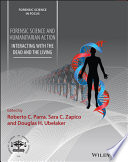
Product details:
ISBN-10 : 111948202X
ISBN-13 : 9781119482024
Author: Roberto C. Parra
Using the preservation of the dignity of the deceased as its foundation, Forensic Science and Humanitarian Action: Interacting with the Dead and the Living is a unique examination of the applications of humanitarian forensic science. Spanning two comprehensive volumes, the text is sufficiently detailed for forensic practitioners, yet accessible enough for non-specialists, and discusses both the latest technologies and real-world interactions. Arranged into five sections, this book addresses the ‘management of the dead’ across five major areas in humanitarian forensic science.
Forensic Science and Humanitarian Action, 2 Volume Set: Interacting with the Dead and the Living 1st Table of contents:
SECTION I: History, theory, practice and legal foundation
CHAPTER 1: Using forensic science to care for the dead and search for the missing: In conversation with Morris Tidball‐Binz
Afterword
Acknowledgement
References
CHAPTER 2: The protection of the missing and the dead under international law
2.1 Introduction
2.2 The protection of the missing and the dead under international law
2.3 The families at the center of the humanitarian action
2.4 Conclusion
References
CHAPTER 3: Extraordinary deathwork: New developments in, and the social significance of, forensic humanitarian action
3.1 Introduction
3.2 Field constitution: new developments
3.3 (Extra‐ordinary) deathwork
3.4 Conclusions
References
CHAPTER 4: Between darts and bullets: A bioarchaeological view on the study of human rights and IHL violations
4.1 Introduction
4.2 What is violence?
4.3 How do bioarchaeologists study violence?
4.4 A + B = violence?
4.5 Bioarchaeological vs. clinical and forensic perspectives
References
CHAPTER 5: Posthumous dignity and the importance in returning remains of the deceased
5.1 Introduction
5.2 Posthumous dignity
5.3 The concept of moral injury
5.4 The concept of human remains as a boundary object
5.5 Theoretical framework regarding safeguarding dignity of the deceased
5.6 The importance of returning remains of the deceased
5.7 Conclusion
References
CHAPTER 6: Unidentified deceased persons: Social life, social death and humanitarian action
6.1 Introduction
6.2 The social life of dead bodies
6.3 The social death of the dead
6.4 Unidentified dead bodies and deposit sites
6.5 Dignifying the life of the dead
6.6 Conclusion
Acknowledgement
References
CHAPTER 7: A forensic perspective on the new disappeared: Migration revisited
7.1 Introduction
7.2 Framing the tragedy: Data challenges
7.3 Framing the tragedy: The missing and the dead
7.4 Tracing and identification
7.5 Complex networks and migration
7.6 A non‐body centred forensic response?
7.7 Conclusion
Acknowledgement
References
CHAPTER 8: Iran: The impact of the beliefscape on the risk culture, resilience and disaster risk governance
8.1 Introduction
8.2 Risk culture
8.3 Resilience
8.4 Disaster risk governance
8.5 Beliefscape in Iran
8.6 Discussions and concluding remarks
References
CHAPTER 9: The search for the missing from a humanitarian approach as a Peruvian national policy
9.1 Introduction
9.2 Peruvian scenario regarding the search for missing persons
9.3 Progress made by the DGBPD
9.4 Conclusion
CHAPTER 10: Humanitarian forensic action in the Marawi crisis
10.1 Introduction
10.2 The Philippine forensic response capacity
10.3 The conflict in Mindanao and the Marawi crisis
10.4 Forensic humanitarian response to the Marawi crisis
10.5 Discussion
Acknowledgements
References
SECTION II: Forensic basic information to trace missing persons
CHAPTER 11: Integration of information on missing persons and unidentified human remains: Best practices
11.1 Introduction
11.2 The integration of information
11.3 Premises to take into account
11.4 Best practices
Appendix: Colombian normative references
CHAPTER 12: Forensic archaeology and humanitarian context: Localization, recovery and documentation of human remains
12.1 Introduction
12.2 Localization and recovery strategies
12.3 Sites with human remains and their associated elements
12.4 Recovery of human remains
12.5 Recording human remains
12.6 Recording associated elements
12.7 Disposal container
12.8 Recording forensic deposits
12.9 Evaluating relative chronology
12.10 Conclusions and recommendations
References
CHAPTER 13: Applications of physiological bases of aging to forensic science: New advances
13.1 Introduction
13.2 Chemical methodologies
13.3 Molecular biology methodologies
13.4 Conclusion
References
CHAPTER 14: Adult skeletal sex estimation and global standardization
14.1 Introduction
14.2 Sexual size dimorphism
14.3 Morphological traits
14.4 Global standardization
References
CHAPTER 15: Sexual dimorphism in juvenile skeletons and its real problem
15.1 Introduction
15.2 Is it possible to estimate the sex of subadults based on morphological characteristics of the jaw and the ilium?
15.3 From what age range is it possible to estimate sex in subadult skeletal remains? Skeletal growth, bone maturation and sex steroids
15.4 What is the degree of precision and reliability of the visual criteria used to estimate sex in subadult skeletal remains? What criteria are applicable toforensic contexts?
15.5 Comments and discussion
15.6 Conclusions
References
CHAPTER 16: Dental aging methods and population variation
16.1 Introduction
16.2 Dental age estimation: its application in forensic science
16.3 Tooth developmental changes
16.4 Dental age estimation methods using tooth development and eruption
16.5 Post‐formation changes in dental tissues
16.6 Methods of dental age estimation using tooth post‐formation changes
16.7 Dental age estimation methods and their application in forensic casework
References
CHAPTER 17: Age assessment in unaccompanied minors: A review
17.1 Introduction
17.2 Age assessment methods in unaccompanied minors
17.3 Age definition: What does age mean?
17.4 Choosing a suitable method
17.5 Forensic age assessment medical methods
17.6 Final estimation and report
17.7 Conclusions
References
CHAPTER 18: Forensic complex scenarios and technological innovation: Brief case report from Colombia
18.1 Introduction
18.2 Case 1: Predictive spatial and statistical modeling (MESP) as a tool to support the search for missing persons in the department of Casanare
18.3 Case 2: Modeling the estimated universe of persons reported missing: The cases of Casanare and Norte de Santander
18.4 Case 3: Proposal for the retrospective and integrated analysis of environmental and contextual elements for a differential forensic genetic approach
18.5 Case 4: Tools for the forensic analysis of cases of alleged extrajudicial executions
References
SECTION III: Stable isotope forensics and the search for missing persons
CHAPTER 19: The role of stable isotope analysis in forensic anthropology
19.1 Introduction
19.2 Trace element analysis
19.3 Diet and isotopic analysis
19.4 Variation within individuals
19.5 Summary
References
CHAPTER 20: Basic principles of stable isotope analysis in humanitarian forensic science
20.1 Introduction
20.2 Background on isotopes
20.3 Isotopes in human tissue
20.4 Longer‐term “memory” tissues: Bone and teeth
20.5 Shorter‐term “memory” tissues: Hair and nail
20.6 Conclusion
References
CHAPTER 21: Andean isoscapes: Creating and testing oxygen isoscape models to aid in the identification of missing persons in Peru
21.1 Introduction
21.2 Materials and methods
21.3 Results
21.4 Discussion
Acknowledgements
References
CHAPTER 22: The period of violence in Peru (1980–2000): Applying isotope analysis and isoscapes in forensic cases of the unidentified deceased
22.1 Introduction
22.2 The Peruvian Conflict and the government response
22.3 The search for missing persons: “Families remain walking”
22.4 Applying new isotopic techniques to aid in identifying victims’ bodies in Peru
22.5 Integrating traditional and non‐traditional methods to identify missing persons in Peru
22.6 Conclusions
References
CHAPTER 23: Utility of stable isotope ratios of tap water and human hair in determining region of origin in Central and Southern Mexico: Modeling relationships between δ2H and δ18O isotope inputs in modern Mexican hair
23.1 Introduction
23.2 Water stress in Mexico
23.3 Tuning parameters in mathematical models used for provenance analysis
23.4 Extension to analysis of hair isotopes in the absence of paired water samples
23.5 Materials and methods
23.6 Estimation of credible parameter values by approximate Bayesian computation
23.7 Results obtained using the established US supermarket diet
23.8 Results achieved by estimating international diet, drinking water, and regional diet isotopes
23.9 Conclusions
References
CHAPTER 24: Multi‐isotope approaches for region‐of‐origin predictions of undocumented border crossers from the US–Mexico border: Biocultural perspectives on diet and travel history
24.1 Introduction
24.2 SIA as an investigative tool for undocumented border crossers
24.3 Samples and analytical methods
24.4 Results
24.5 Case studies
24.6 Summary and future research directions
Acknowledgements
References
CHAPTER 25: Spatial distribution of stable isotope values of human hair: Tools for region‐of‐origin and travel history assignment
25.1 Introduction
25.2 Why hair?
25.3 Methods
25.4 How is isotopic information incorporated into hair?
25.5 Geographical and population patterns of δ13C, δ15N and δ34S values
25.6 Geographical patterns of δ18O and δ2H values
25.7 Individual deviations from expected patterns
25.8 Travel history
25.9 Solved forensic investigations
25.10 Final considerations
25.11 Conclusions
References
CHAPTER 26: Applicability of stable isotope analysis to the Colombian human identification crisis
26.1 Introduction
26.2 Stable isotopes in human provenance
26.3 Human tissues appropriate for isotope studies
26.4 Colombian geography
26.5 The Colombian conflict and the missing
26.6 Stable isotopes and identification in Colombia: Initial research efforts
26.7 Final remarks
Acknowledgements
References
CHAPTER 27: Application of stable isotopes and geostatistics to infer region of geographical origin for deceased undocumented Latin American migrants
27.1 Introduction
27.2 Stable isotopes, provenancing studies, and isoscapes
27.3 Materials and methods
27.4 Results
27.5 Discussion and conclusions
References
CHAPTER 28: Tracking geographical patterns of contemporary human diet in Brazil using stable isotopes of nail keratin
28.1 Introduction
28.2 Isotope procedures
28.3 Scientific basis for isotope data interpretation
28.4 Geographic peculiarities in stable isotope ratios of fingernails
28.5 Brazilian isoscapes
28.6 Final considerations
References
Volume 2
About the editors
About the contributors
Foreword: Peter Maurer
Foreword: Susan M. Ballou
Foreword: Oran Finegan
Series Preface
Preface
References
Acknowledgements
SECTION IV: DNA analysis and the forensic identification process
CHAPTER 29: Phenotypic markers for forensic purposes
29.1 Introduction
29.2 Biogeographical origin
29.3 Externally visible characteristics
29.4 Individual age
Acknowledgements
References
CHAPTER 30: Genetic structure and kinship analysis from the Peruvian Andean area:
30.1 Introduction
30.2 Previous factors for matching success in the context of genetic structure
30.3 Substructure and matching between genetic profile databases (Factor 3)
30.4 Origin of Peruvian population and the genetic structure (Factor 3)
30.5 Admixture of Peruvian population and the genetic structure (Factor 3)
30.6 Matching of genetic profiles in the context of genetic similarity (Factor 3)
References
CHAPTER 31: Short tandem repeat markers applied to the identification of human remains
31.1 Introduction
31.2 Selection of genetic markers
31.3 STR loci and kinship testing
31.4 The strength of DNA evidence
31.5 Limitations of STR loci for the identification of human remains
31.6 Massive parallel sequencing (MPS)
31.7 Incorporating DNA analysis into the identification process
31.8 Conclusions
References
CHAPTER 32: Genetics without non‐genetic data: Forensic difficulties in correct identification – the Colombian experience
32.1 Genetics in the identification of bodies associated with the violation of human rights and international humanitarian law: A humanitarian challenge
32.2 The integration of genetics into traditional forensic disciplines specialized in the identification of human remains
32.3 Forensic genetics in the Colombian armed conflict
32.4 Interdisciplinary forensic work is a priority
32.5 Tasks of the forensic geneticist within the interdisciplinary identification team
32.6 Effects of the overvaluation of the genetic result
32.7 Conclusion
References
CHAPTER 33: Is DNA always the answer?
33.1 Introduction
33.2 The magic of DNA
33.3 DNA as truth, identity and relatedness
33.4 Justice and healing
33.5 Dealing with bodies
33.6 The politics of identification
33.7 Conclusion
References
SECTION V: Identifying deceased and finding missing persons
CHAPTER 34: Migrant deaths along the Texas/Mexico border: A collaborative approach to forensic identification of human remains
34.1 Introduction
34.2 Background
34.3 Case studies
34.4 Discussion
References
CHAPTER 35: The Argentine experience in forensic identification of human remains
35.1 Introduction
35.2 Methods and challenges in applying forensic genetics
35.3 Databases, data comparisons and reconciliation
35.4 Conclusions
References
CHAPTER 36: The approach to unidentified dead migrants in Italy
36.1 Introduction
36.2 The experimental Italian strategy
36.3 Conclusion
Acknowledgements
References
CHAPTER 37: Identification of human skeletal remains at the Federal Bureau of Investigation (FBI) Laboratory
37.1 Introduction
37.2 Search and recovery – FBI Evidence Response Teams
37.3 Forensic anthropology
37.4 DNA analysis
37.5 Facial approximation
37.6 Additional efforts
37.7 Conclusion
References
CHAPTER 38: Forensic human identification: An Australian perspective
38.1 Introduction
38.2 Identification contexts
38.3 Ante‐ and post‐mortem data
38.4 Forensic anthropology in Australia
38.5 The process of identification in coronial casework
38.6 Research
38.7 Conclusion
Acknowledgements
References
CHAPTER 39: Forensic identification of human remains in Cyprus: The humanitarian work of the Committee on Missing Persons in Cyprus (CMP)
39.1 Origins and mandate of the CMP
39.2 The project on the exhumation, identification and return of remains of missing persons
39.3 Investigations on missing persons cases
39.4 Sources of information and challenges
39.5 Locating human remains
39.6 Search for and recovery of remains
39.7 Analysis at the CMP Anthropological Laboratory (CAL)
39.8 Challenging cases
39.9 Sampling strategy
39.10 The role of DNA analysis
39.11 Collection of family reference samples
39.12 DNA analysis and the identification process
39.13 Reconciliation of information and identification: Challenges and approach
39.14 Notification of identification and return of remains
39.15 Conclusion
Acknowledgements
References
CHAPTER 40: Forensic human identification during a humanitarian crisis in Guatemala: the deadly eruption of Volcán de Fuego
40.1 Introduction
40.2 The context of violence in Guatemala
40.3 The forensic anthropological analysis in medico‐legal investigation
40.4 The Volcán de Fuego case: Paradigmatic event in Guatemala
40.5 Conclusions
Acknowledgements
References
CHAPTER 41: Peruvian forensic experience in the search for missing persons and the identification of human remains: History, limitations and future challenges
41.1 Introduction
41.2 The development of anthropological–forensic investigations and the search for missing persons in Peru
41.3 Complexity and forensic limitations of the Peruvian case and the expectations of the relatives
41.4 Future challenges
Acknowledgements
References
CHAPTER 42: Forensic identification of human remains in Uruguay
42.1 Introduction
42.2 Forensic identification of human remains in Uruguay
42.3 Roberto Gomensoro Josman case
42.4 Olivar Sena case
42.5 María Claudia García case
42.6 Jonathan Viera case
42.7 Recommendations
References
CHAPTER 43: Forensic analysis of the unidentified dead in Costa Rica from 2000 to the present
43.1 Introduction
43.2 Violence in Central and South America
43.3 A complicating factor: Regional migration
43.4 Conclusions
References
CHAPTER 44: Identifying the unknown and the undocumented: The Johannesburg (South Africa) experience
44.1 Introduction
44.2 Forensic pathology services
44.3 Forensic anthropology
44.4 Discussion and conclusion
Acknowledgements
References
CHAPTER 45: The Colombian experience in forensic human identification
45.1 Introduction
45.2 Evolution of the forensic human identification process in Colombia
45.3 Other activities developed for human identification in the country
45.4 Cold case: New forensic approach to the Palace of Justice case
45.5 Recent challenges
References
CHAPTER 46: The Chilean experience in forensic identification of human remains
46.1 Origins of the legal medical service
46.2 September 1973 and the role of the Servicio Médico Legal (SML)
46.3 Family members: Search, justice, memory…
46.4 The 1990–2006 transition to democracy: Family members and the continuous search for the detained, disappeared and executed
46.5 Identifications via genetics
46.6 Comments
SECTION VI: Conclusions
CHAPTER 47: Humanitarian action: New approaches from forensic science
47.1 Introduction
47.2 History
47.3 Theoretical foundation
47.4 The legal and cultural arena
47.5 Regional applications
47.6 Capacity‐building
47.7 Trauma assessment
47.8 Technology
47.9 Expanding areas of application
47.10 Summary
People also search for Forensic Science and Humanitarian Action, 2 Volume Set: Interacting with the Dead and the Living 1st:
forensic science and humanitarian work
humanitarian forensic action
forensic science and anthropology
forensic science animals
a forensic anthropologist
Tags:
Forensic Science,Humanitarian,Interacting,the Living,Roberto Parra
You may also like…
Uncategorized
dictionaries & phrasebooks
Uncategorized
Medicine & Health Science
Auerbachu2019s Wilderness Medicine, 2-Volume Set 7th Edition
Engineering
Politics & Philosophy - Government & Politics
The Cambridge History of Nationhood and Nationalism 2 Volume Hardback Set Carmichael


